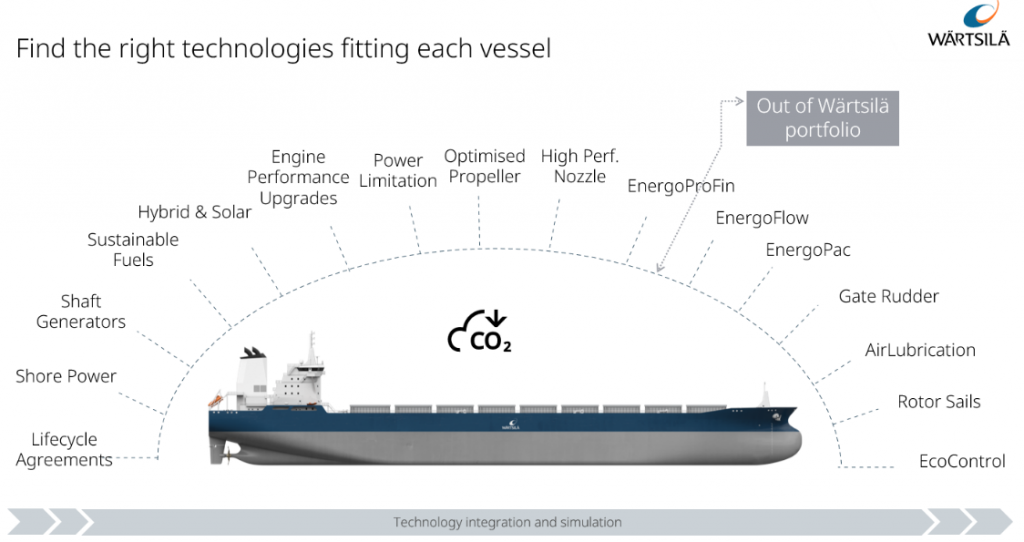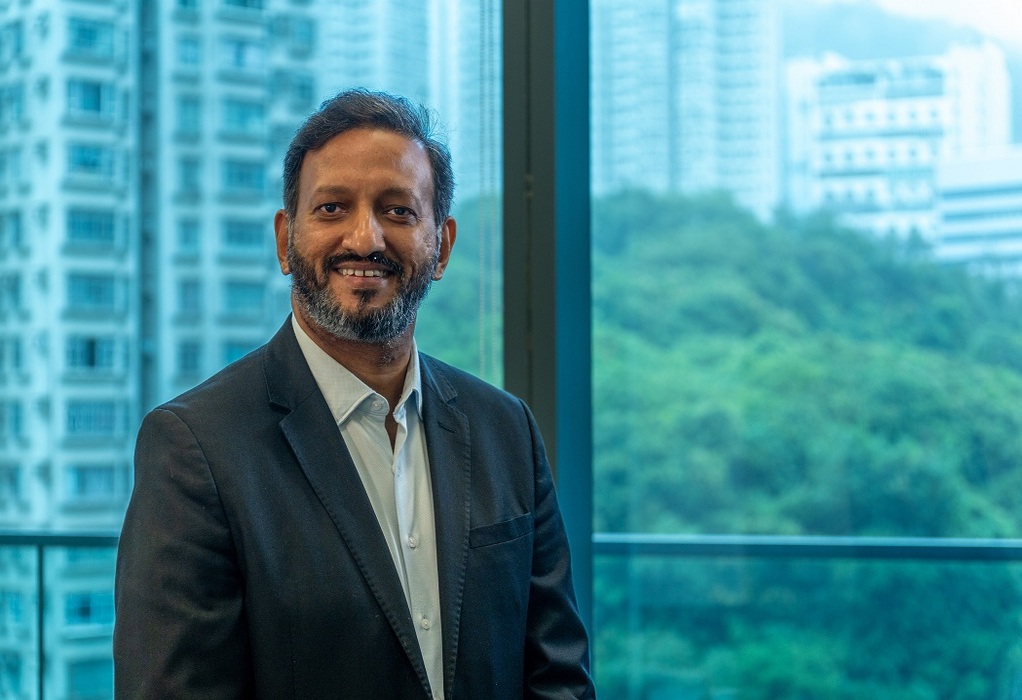The challenge is, there are many different options and no consensus on which sustainable fuels will be commercially available. This creates business risks regarding fuel availability, increased CAPEX/OPEX, vessel design, storage and handling, including complexities in managing cryogenic requirements, shares Sachin Kulkarni, Head of Sales, Marine Power, South Asia, Wärtsila
What are the main challenges for zero-carbon energy transition for shipping in India?
In accordance with the IMO target, hydrogen and hydrogen-derived synthetic fuels (such as Ammonia or Methanol) are considered amongst the most scalable long-term solutions as marine bunker fuels; option of electrification is also being actively explored by the shipping industry.
The challenge we have is that there are many different options and no consensus today on which of the sustainable fuels will be commercially available. Commercial availability depends on geographic location, national interests and legislations, and the availability of feedstock.
These uncertainties create business risks regarding fuel availability, increased CAPEX / OPEX, vessel design, its structure, storage and handling, including complexities in managing cryogenic requirements and toxicity. Then we also have the timing issue: when should one make the investment & go for sustainable fuel? We only have a limited amount of shipyard capacity in the world, so it would not be possible / feasible to upgrade all commercial vessels at the same time.
Readiness and availability of zero carbon/ carbon neutral fuels remains lower than the transition fuels, which could offer GHG emission reduction in the short term while building capacity and infrastructure for long term requirement for zero carbon/ carbon neutral fuels. These transition fuels such as biofuels, LNG can leverage existing technology and infrastructure to enable uptake. However, cross-sector demand and volatile pricing mechanisms can increase the level of risk, along with uncertainty regarding the availability and compliance with new regulations.
Increased adoption of sustainable fuel technologies will give rise to the need to develop pertinent infrastructure and to ensure a steady supply, needed to have aggregate demand of these fuels. To derive aggregate demand not only for sustainable fuels but also charging infrastructure for electric vessels & shore power, key stakeholders in the maritime ecosystem need to collaborate and pre-empt the growth of demand for vessels and the subsequent energy requirements.
There is also a need for developing maritime clusters where increased co-operation amongst maritime stakeholders throughout the value chain can be facilitated.
Ultimately, the final step in shipping’s journey towards decarbonisation will be the total use of zero-carbon fuels, either in whole or blended with conventional fuels or alternative power sources. We are starting to see great results with hydrogen, methanol and ammonia but they will all require more infrastructure to scale up.
How far are new CII compliance regulations going to affect Indian shippers? What solutions Wartsila can offer?
The Carbon Intensity Indicator (CII) is a measure of how efficiently a ship transports goods or passengers and is given in grams of CO2 emitted per cargo-carrying capacity and nautical mile.
Wartsila’s Decarbonisation Services has 3 steps :
- Fleet Decarbonisation Program – analysis of current fleet focussed on environmental compliance
- Decarbonisation Modelling – Real operational data analysis to identify how the referenced vessel is currently operated. Evaluation (and simulations) of solutions to reach the compliance
- Installation Onboard – Real technology installation onboard based on the results of the modelling analysis

Our Decarbonisation modelling process includes 3 stages:
a. Input
- Real operational data, collected and organized though the data cleaning & enrichment process
- Design data
- Selected technologies information
b. Digital model
• Digital creation of the current and the new possible configurations of the vessel
We use the “Vessel Simulator” developed at Wärtsilä that enables us to move from spreadsheet-based calculations to more advanced and precise algorithms.
All the selected technologies will be simulated to quantify how they can impact performances, new ways to operate the vessel, overall efficiency, environmental compliances, and safety.
c. Output – Define the decarbonisation path
- New vessel’s functionalities
- Optimised equipment operation
- Fuel consumption analysis
- Emissions analysis
- Impact on CII rating
The order book for methanol-powered dual-fuel vessels has been on the rise. Do you think methanol has emerged as the best alternative future fuel?
We have many customers who are already running on methanol today. One example of a methanol project in which Wärtsilä was involved in was with Stena Germanica. The 240-metre long ferry Stena Germanica, with a capacity for 1,500 passengers and 300 cars, was retrofitted with a first-of-its-kind fuel-flexible Wärtsilä 4-stroke engine that can run on methanol or traditional marine fuels in 2015.
We have signed a contract to supply engines for Celebrity Cruises’ new ship, the fifth vessel in the company’s revolutionary Edge Series. Working closely in collaboration with Royal Caribbean Group and Chantiers de l’Atlantique, the project will enable the ship to be capable of operating with methanol fuel option. To enable this advance on our side, we will convert two Wärtsilä 46F engines to allow them to utilise methanol as fuel, marking the first-ever such conversion for this particular engine type.
Based on increasing interest over the last few years, we anticipate seeing continued growth in the market for methanol powered vessels. This is made clear by DNV’s Alternative Fuel Insight (AFI) platform, which tracks orders and bunkering locations for alternative fuels. It recently logged orders for 35 methanol-fuelled vessels in 2022, which is in addition to the 26 vessels currently in operation.
According to a report published recently, the engine manufacturers are eying to retrofit the two- and four-stroke engines eligible for conversion to run on green fuels to save 97m tons of CO2 emissions annually. What are the technical solutions Wartsila offers to ship owners for green fuel transition?
At Wärtsilä, we offer a variety of retrofit solutions that can be implemented on both 4-stroke and 2-stroke engines. Examples include:
The Wärtsilä Fit4Fuels – a retrofit technology platform converting 2-stroke diesel engines to run on future fuels. The ground-breaking hybrid combustion concept maintains engine power density and eliminates fuel slip, providing a viable and flexible pathway towards a decarbonised future. It also increases the commercial value and lifetime of existing vessels.
To enhance this solution further, we recently introduced of our new radical derating retrofit solution – Wärtsilä Fit4Power – which extends the emissions-compliant lifetime of merchant vessels by providing the existing two-strike fleet with leaner, healthier and more optimised engines. Radical derating gives mid-life engines a new lease of life, with a power output and emissions profile that can take them through the early years of CII and prepare them for the most efficient use of new fuels needed to reach later emissions targets.
Another example is our Wärtsilä 32 engine which is available for newbuild or retrofitting. Our Wärtsilä 32 methanol engine does not require any technical conversion when starting to run on methanol. However, it is important that there is a methanol supply system in place along with the adequate safety measures taken in the engine room and tank space. That’s why, last year, we announced that Wärtsilä has developed a dedicated fuel supply system for methanol, MethanolPac.
Combined with the Wärtsilä 32 Methanol engine, as well as our well-proven retrofit and system integration capabilities, MethanolPac enables Wärtsilä to deliver methanol-capable fuel and power systems across a wide range of vessel segments.
Tags: Ammonia, CII, Design, Future Fuel, Marine Fuel, Methanol, Sachin Kulkarni, Shipping Industry, Wartsila, Zero Carbon

Recent Posts
India gets major push with first multi-purpose Green Hydrogen project
Carbon Clean starts CCS module construction
All American delivers hydrofoil-assisted tour vessel
Safe Bulkers continues fleet renewal with eco-friendly Kamsarmax
Solution developed to convert paper sludge, food and textile waste into bioethanol
V.Ships seals shipmanagement deal for X-Press Feeders
G7 countries task IRENA to monitor Group’s renewable energy progress
Kongsberg Maritime hybrid technology to optimise energy use and cut emissions